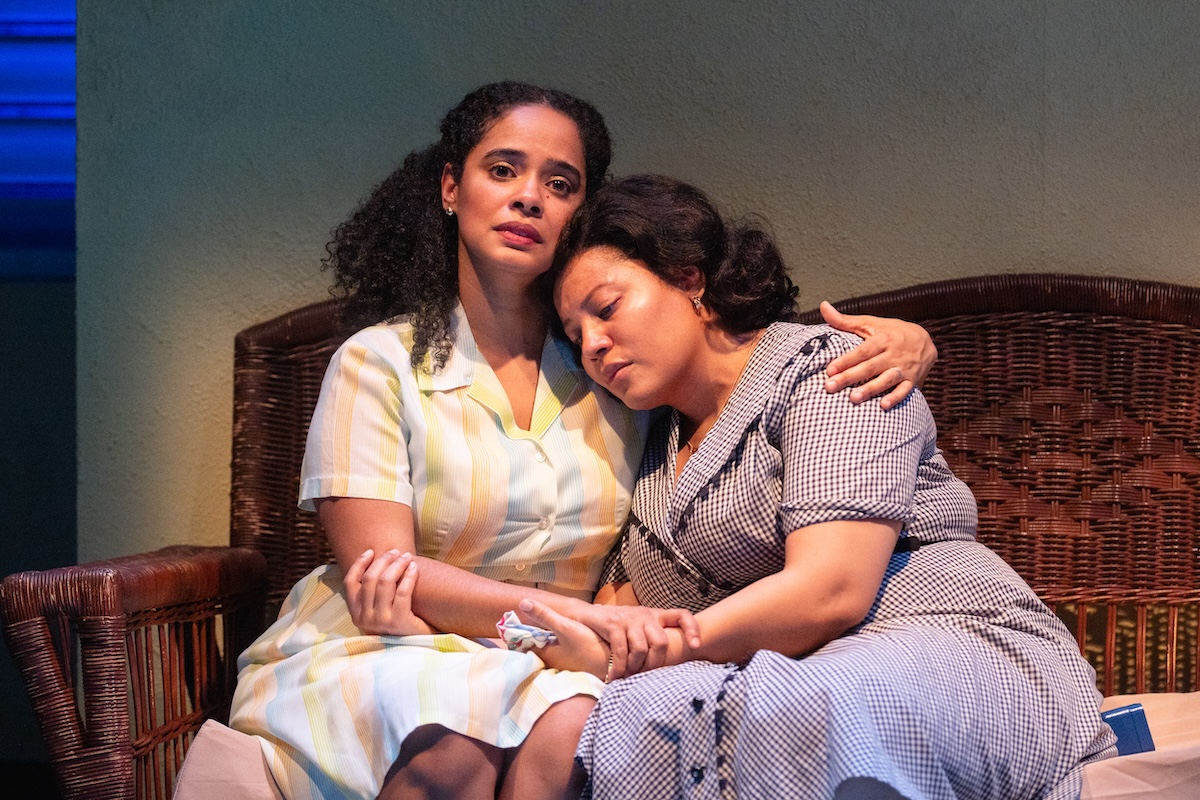Gone

(© Station 5)
Director Kenn Watt has pulled out nearly every avant-garde trick in the book to prop up his world premiere staging of Charles L. Mee’s Gone. Actors speak softly into microphones, live video is projected onto portions of the set, seemingly random dance breaks interrupt the action, and much, much more. Unfortunately, most of it fails to illuminate the text and comes across as a desperate attempt to make the production entertaining. It fails to do so, further rendering a disservice to what could have been a thoughtful and elegiac meditation on loss and grief.
The cast of six — Jennifer Wright Cook, Pam Diem, Signe V. Harriday, Clark Huggins, Jake Manabat, and Peter Richards — are intermittently engaging, although they don’t always seem to know why they’re doing a particular action, which makes it difficult for the audience to figure it out, as well.
The fragmentary nature of this particular Mee script is, admittedly, a challenge. There is no plot. The text instead draws from a multitude of sources including Proust, Sophocles, and Ginsberg. Excerpts from Mee’s previous plays are also thrown into the mix. These dialogue sections are the most engaging, as they give the actors a concrete grounding.
Richards and Manubat are terrific in a sequence taken from Mee’s Wintertime, containing the memorable line, “I love you like a cicada.” Richards is also brilliant in a segment from the playwright’s Big Love, hilariously running through passages such as “But I get started on a sentence, and that leads to another sentence, and then, the first thing I know, I’m just trying to work it through, the logic of it, follow it through to the end because I think, if I stop, or if I don’t get through to the end before someone interrupts me they won’t understand what I’m saying.”
Various blog entries, cribbed from Internet sources, are also effective. Different actors take their turns in front of a laptop computer, complete with web-cam, and pour out stream-of-consciousness thoughts about everything from losing weight, to dreams about cat people, to taking drugs at a party, that are surprisingly potent.
Still, most staging choices either don’t work or are incomprehensible. Having Cook, a female performer, talk about becoming “a funny little old man” has the potential for gender subversion, but not when rendered in such a flat, uninteresting manner. Meanwhile, Manubat’s portrayal of John Updike, utilizing a thick Filipino accent, does nothing except elicit a cheap laugh.
Huggins, who performs the Proust sections, has an engaging presence, but tends to speak in a vocal pattern that gets tiresome after awhile. Since his monologues are often quite lengthy, this is a serious problem. Watt has injected a variety of things to drum up these passages, such as having Huggins pretend to masturbate while Richards and Manubat strike various homoerotic sexual positions. However, this only serves to distract the viewer from what Huggins is actually saying, rather than augmenting or elucidating the words.
Jo Winiarski’s set design includes a small shrine that various cast members occasionally pay tribute to, reinforcing the play’s dominant theme of loss. The shrine is mostly composed of various Maneki Neko or “beckoning cat” figurines, which are Japanese sculptures believed to give good luck to the owner. While such figures usually signify commerce, in this case perhaps they’re meant to wish the deceased luck in the afterworld.
The lighting by Scott Bolman emphasizes the play of shadows, helping set the production’s tone, and the sound design, by Watt and Drew Vanderburg, incorporates noises such as gurgling water, church bells, and the shrill whistle of a train that also affect the mood of the piece.
If the acting and directing were as effective as these technical elements, than perhaps the intermissionless piece wouldn’t feel so much longer than its running time of 90 minutes.












